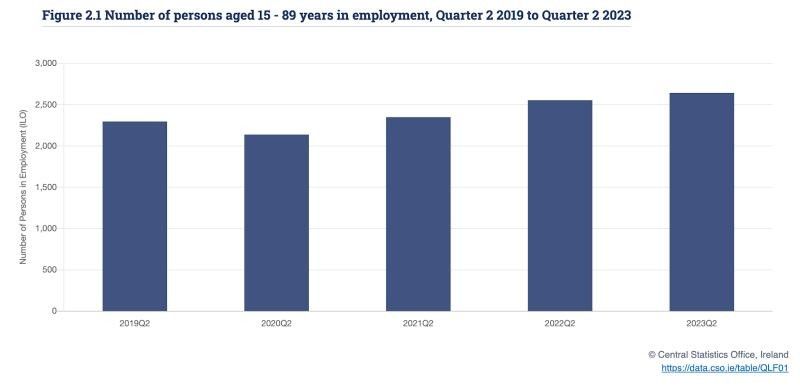Strategic Forecasting Navigating the 2024 Hiring Landscape

Strategic forecasting is a process used in business and other organisations to predict future trends, challenges, and opportunities. It's a key part of strategic planning, helping decision-makers to anticipate changes in the market, technology, economy, and society.
So why do we not do this in relation to headcount?
Personally - Often, businesses get caught up in the immediacy of day-to-day operations, overlooking the long-term strategic value of proactive headcount planning. Yet, as we'll explore, integrating strategic forecasting into headcount decisions is crucial for sustainable growth, risk mitigation, and maintaining a competitive edge in today's fast-evolving business environment.
I see a lot of reactionary rather than strategic headcount. Strategic forecasting for headcount is not just about numbers; it’s about ensuring that a scaling company grows sustainably and remains competitive, efficient, and responsive to both internal and external changes. I would also argue that the main reason it should be done is mitigating risks associated with talent shortages, skills gaps, and turnover, thereby maintaining operational stability.
Strategic Forecasting for headcount will become extremely important as we embark on 2024, the landscape of hiring presents a complex puzzle of evolving workforce demographics, shifting employee expectations, and technological advancements.
There was a seismic shift in employment in 2023 with a lot of companies rationalising staff numbers but we are still pretty much at full employment highlighting the need for strategic forecasting especially in this dynamic environment. It's a daunting task of accurately forecasting their hiring needs but this will be a key factor in hiring the best talent for your business rather than hiring quickly to fill a need!
Below I have highlighted some of the multifaceted challenges businesses will encounter in hiring forecasting for 2024.

1) Demographic Shifts and Skills Gap
The workforce is ageing, with a notable increase in older workers, while younger generations grapple with filling the resulting skills gap. This demographic evolution necessitates innovative approaches in cross-generational training and skill enhancement.
2) Talent Management
Scaling companies must not only hire more staff but also the right kind of staff. Strategic forecasting helps identify future skill requirements, allowing companies to focus on recruiting employees with the necessary skills and expertise.
3) The Remote Work question
The surge in remote working has expanded talent pools globally, yet it brings unique challenges such as managing diverse time zones and cultural differences. Yet the drive for companies to get workers back into the office has resulted in a standoff within the workforce. Some generations are happy to return to a hybrid model, some want fully remote but I am yet to see anyone say they are changing roles because their company isn't in the office 5 days a week.
4) Rising Employee Expectations
Today's workforce seeks more than just a paycheck. They value flexibility, inclusive cultures, and opportunities for growth, pushing companies to rethink their employment value proposition.
5) The Technology Factor
While technology offers solutions, it also presents challenges like the pitfalls of AI in recruitment decisions and the need for data-driven recruitment strategies.
6) Brand Differentiation
In a crowded marketplace, establishing a strong employer brand has become essential for attracting and retaining talent.
7) Risk Mitigation
Over or under-hiring can be costly. Over-hiring can lead to unnecessary expenses, while under-hiring can result in overworked employees and missed opportunities. Forecasting helps balance this.
8) Succession Planning
One of the most overlooked spaces in hiring or talent planning. As companies grow, roles and responsibilities evolve. Forecasting helps in identifying future leadership needs and in planning for succession to ensure a smooth transition in key positions. As companies grow and evolve, strategic leaders move on and leave the company bringing with them company IP, having a success plan will mitigate this and ensure the IP remains with the business.
In 2024, strategic forecasting in headcount is vital for companies facing a complex hiring landscape shaped by demographic shifts, technological advancements, and evolving employee expectations. It's crucial for managing talent shortages, skill gaps, and ensuring operational stability.
This approach goes beyond just filling positions; it involves talent management, succession planning, and maintaining company integrity. Companies that strategically forecast their hiring needs will attract and retain top talent, stay competitive, and adapt effectively to market changes. Collaboration across departments is key to the successful implementation of these strategies.
Strategic Forecasting in Reality: A Practical Example
To bring the concept of strategic forecasting to life, let's consider a real-world scenario.
You have identified a need for a new hire to join your business in April.
The recruitment process, from initiating the search to making the hire, typically takes about four weeks. Working backwards from your ideal start date in April, you should aim to extend an offer by the end of February
Here's a breakdown of the timeline:
- Last Week of January: Initiate the search process. This is when you start sourcing candidates and advertising the position.
- End of February: Your goal is to have interviewed and selected the ideal candidate, ready to make an offer.
- By February 29th: Aim to have the employment contract signed.
- StartDate - April 1st
The importance of strategic planning is crucial as a leader to ensure the best talent is working for you. By forecasting your hiring needs well in advance and working back from your target dates, you ensure that you are not just reacting to immediate needs but are proactively managing your talent pipeline. This approach allows for a more thoughtful and thorough recruitment process, ultimately leading to better hiring decisions.
Want to discuss your planning reach out to Gavin Fox the lad with the 🦊
